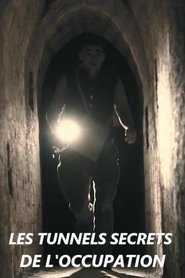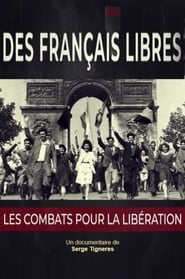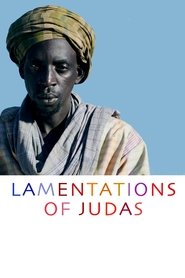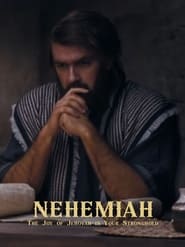New History Movies on Pantaflix - Page 213
-
Tesla
2020
Tesla
2020
star 5.8The story of the Promethean struggles of Nikola Tesla, as he attempts to transcend entrenched technology—including his own previous work—by pioneering a system of wireless energy that would change the world. -
The Eight Hundred
2020
The Eight Hundred
2020
star 7In 1937, eight hundred Chinese soldiers fight under siege from a warehouse in the middle of the Shanghai battlefield, completely surrounded by the Japanese army. -
The Good Traitor
2020
The Good Traitor
2020
star 5.4The Danish ambassador to Washington declares himself to be the sole representative of a free Denmark during the Nazi occupation of the country. -
The Invisible Collection
2020
The 1920s, Germany, times of hyperinflation. A young antique dealer realizes that his father’s shop is on the verge of going bankrupt. While going through the journal records, he finds notes about an old client, who owns a priceless collection. He decides to go to the province, hoping to buy it for dirt-cheap. -
Muñiz, The Argentinian In The Algerian Revolution
2020
star 10Roberto Muniz, nicknamed "Mahmoud the Argentinian," was a revolutionary fighter who joined the National Liberation Army in 1959 to support the Algerian cause in the war of independence against France. He joined a clandestine group that manufactured weapons and ammunition to be transported to Algeria to support the revolution that began in 1954. After the war, the Algerian government invited the mujahid to stay, an offer he accepted to begin a new life as an employee of Sonnelgaz and a member of the General Union of Algerian Workers (UGTA), accompanied by his wife Alfonsa, a textile union activist who came from Argentina to join this North African adventure. -
Final Rendezvous
2020
Final Rendezvous
2020
During the nuclear-charged 1960s, the KGB was active in sleepy Australian suburbia. For two years, the country’s security service, ASIO, secretly filmed meetings between a senior KGB officer, Ivan Skripov, and his British-born agent. Unknown to Skripov, she was a double agent - code name "Sylvia". Sylvia’s final rendezvous with an unknown "KGB illegal" operative held the promise of exposing a network of Soviet spies that had infiltrated the British atomic and rocketry facilities in South Australia. -
The Autumn of History
2020
Barcelona, 1992. A historian has a conversation with a mysterious man who claims that, after the Spanish Civil War, witnessed one of the darkest episodes of Franco dictatorship. The meeting soon becomes an exchange of personal memories of that year 1940, the autumn of history. -
Heneral Rizal
2020
Heneral Rizal
2020
Heneral Rizal uncovers the story of Paciano Rizal, usually regarded as the ever-supportive elder brother of the Filipino National Hero, Dr. Jose Rizal. Unknown to many, Paciano was a proficient general who fought the colonizers, together with Andres Bonifacio and Emilio Jacinto. He was instrumental in liberating Calamba during the Philippine Revolution. -
The Abandoned Block
2020
The Abandoned Block
2020
star 6A useless, damaged, forgotten block of marble emerges from obscurity to become one of the greatest works of art in history. -
Lamentations of Judas
2020
star 4The Terrible Ones, a group of Black Angolan soldiers, once fought white South Africa's colonial wars. Repatriated to South Africa at the end of the eighties, some of them languish in the ruins of Pomfret, a former asbestos-mining town remotely situated at the edge of the Kalahari Desert. -
Nehemiah: “The Joy of Jehovah Is Your Stronghold”
2020
Nehemiah leaves his position in the Castle of Shushan to rebuild the walls of Jehovah’s great city. However, a large construction project isn’t the only test he will face. Will prayer and courage be enough to complete the project? After rebuilding Jerusalem’s walls, Nehemiah faces a new challenge. Over time, the nation’s spirituality has deteriorated. With help from Ezra and Malachi, they set out to restore pure worship. -
Hiroshima and Nagasaki: 75 Years Later
2020
star 6.6Hiroshima and Nagasaki: 75 Years Later is told entirely from the first-person perspective of leaders, physicists, soldiers and survivors. -
Louis van Beethoven
2020
Louis van Beethoven
2020
star 6.71779. Eight-year-old Ludwig van Beethoven, called "Louis", is already known as a musical prodigy. He learns to go his own way - much to the dismay of the people around him. Some years later, he meets Mozart during times of political upheaval. The unconventional genius and French Revolution are sparking a fire in Louis' heart; he doesn't want to serve a master - only the arts. Facing times of family tragedies and unrequited love, he almost gives up. However, Louis makes it to Vienna to study under Haydn in 1792, and the rest is history. Who was this man, whose music has since touched countless hearts and minds? At the end of his life, the master is isolated by loss of loved ones and hearing. Surely though, he was way ahead of his times. -
Mr. Miao
2020
Mr. Miao
2020
star 4.7The feature introduces a fictional golden-colored flower, which possesses the magical ability to debauch humans who get too close to it. As the flower only chooses kindhearted people as hosts, a group of martial artists who want to eradicate the plants face a dilemma: should one kill good people for rescuing men from sin? -
Labyrinth of Cinema
2020
Labyrinth of Cinema
2020
star 6.9When lightning strikes a theater about to close its doors, three moviegoers are thrust back in time to the world inside the screen. -
Shadow of Dumont
2020
Shadow of Dumont
2020
A road trip documentary following the life of Métis freedom fighter Gabriel Dumont. -
Fall in Love with My Badboy
2020
A domineering two-faced senior; a gentle and tender close friend. Between the two of them, who will the sweet and cute lady fall in love with?
 Netflix
Netflix
 Amazon Prime Video
Amazon Prime Video
 Apple iTunes
Apple iTunes
 Apple TV Plus
Apple TV Plus
 Disney Plus
Disney Plus
 Google Play Movies
Google Play Movies
 Paramount Plus
Paramount Plus
 Hulu
Hulu
 HBO Max
HBO Max
 YouTube
YouTube
 fuboTV
fuboTV
 Peacock
Peacock
 Peacock Premium
Peacock Premium
 Amazon Video
Amazon Video
 The Roku Channel
The Roku Channel
 AMC+
AMC+
 Kocowa
Kocowa
 Hoopla
Hoopla
 The CW
The CW
 Vudu
Vudu
 Starz
Starz
 Showtime
Showtime
 PBS
PBS
 Pantaflix
Pantaflix
 FXNow
FXNow
 Tubi TV
Tubi TV
 Kanopy
Kanopy
 Comedy Central
Comedy Central
 Crunchyroll
Crunchyroll
 Microsoft Store
Microsoft Store
 Redbox
Redbox
 Sun Nxt
Sun Nxt
 ABC
ABC
 DIRECTV
DIRECTV
 Crackle
Crackle
 Fandor
Fandor
 Plex
Plex



















